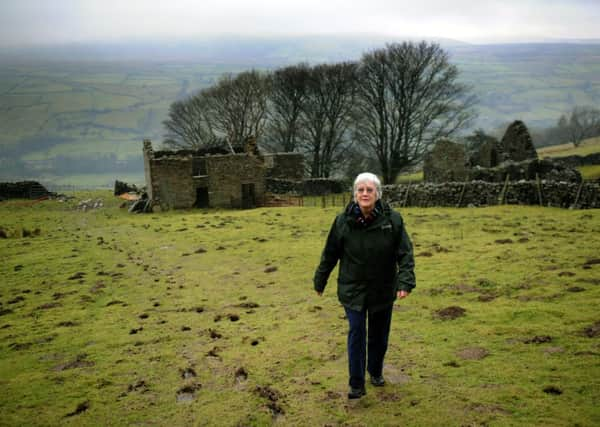Iconic barns face uncertain times


The unique landscape of the Swaledale and Arkengarthdale Barns and Walls Conservation Area in the Yorkshire Dales National Park, which span more than 7,000 ha, is characterised by over 1,000 traditional farm buildings. Most date back to the 19th century and they help attract visitors from all over the world.
But 25 years after the two valleys were designated as a conservation area, grant funding of £1.5m to help farmers repair crumbling buildings are due to run out, leaving the area’s historical features ‘at risk’, according to English Heritage.
Advertisement
Hide AdAdvertisement
Hide AdThe Yorkshire Dales National Park Authority must decide how to save these features from damaging dereliction, a challenge which is explained in a new report and it is asking residents for their ideas and opinions before new plans for managing the upkeep of the conservation area’s precious walls and barns are drawn up.
Graham Dalton, the Authority’s member champion for cultural heritage, said the community is committed to maintaining barns but without funding, the situation is difficult.
“We know that farmers are keen to look after them but finding a continuing use for them is a problem. Planning policies readily permit conversion to alternative commercial use such as workshops, storage, office use and even builders’ yards, but very few applications are made.
“This conservation report emphasises the value of the barns for their place in the landscape and history of the dales. Let us hope that continuing occupation can be secured in some way for many of them – it will be the best outcome for long-term preservation.”
Advertisement
Hide AdAdvertisement
Hide AdHe added that proposals for the Authority’s new Local Plan for 2015-2030 recognise the need for a more flexible approach as to how redundant barns are re-used and that this may include some barns within the conservation areas being considered for conversions into new homes.
Councillor John Blackie, an Authority member and the Independent leader of Richmondshire District Council, says some barns may have to be sacrificed.
“We are not going to be able to save every barn because there are so many. The landscape can take the loss of two barns here and two there to save six there and another five there - this process provides you with the stock of stone and roof slates that we need to save the rest.
“It would help farmers themselves because many holdings have a dozen barns on their land. If these farmers could take down say three and sell some stone, you could bring other more important barns up to scratch. I think that’s an entirely sensible and sustainable way of doing it.
Advertisement
Hide AdAdvertisement
Hide Ad“Cash awarded to farmers in grants is in short supply and from their income they haven’t the money to do it themselves so we need to find ways of putting money in their pockets. “I have been representing them for 17 years as a county councillor and I think I speak for them - they don’t want to desecrate the countryside that they have been proud to live in all their lives but if cash isn’t there they have to consider their priorities.
“There are a number of barns in roadside positions and on farm holdings in positions where there is absolutely no harm whatsoever to convert them into a home for local people.
“The conversion of some of these barns into homes is an affordable option that could enable a son or daughter or life-long resident to stay rather than move away. All we have seen is the depopulation of these dales. Local families are losing the dale and further up Swaledale there are no children.
“This is a way of hanging onto the future of the dale and we must realise that sustainability in the countryside means living locally, earning locally and these redundant barns need to be converted to allow them to stay.
Advertisement
Hide AdAdvertisement
Hide Ad“We have to be more flexible in the future but that doesn’t mean every barn has to be converted and I wouldn’t support that.”
A relaxation of the rules?
The Government is due to announce soon whether permitted development rights which allow for some farm buildings, such as barns, to be converted for commercial use without the need for planning permission will be extended for residential conversions.
The Dales National Park Authority says it is taking a more flexible approach to development but relaxing red tape for residential conversions will have “potentially disastrous consequences” it says. The Authority also proposes to block relaxed conversion rules for commercial uses from next January.
Its report on the Swaledale and Arkengarthdale Barns and Walls Conservation Area can be viewed online at www.yorkshiredales.org.uk/conservationarea-appraisals